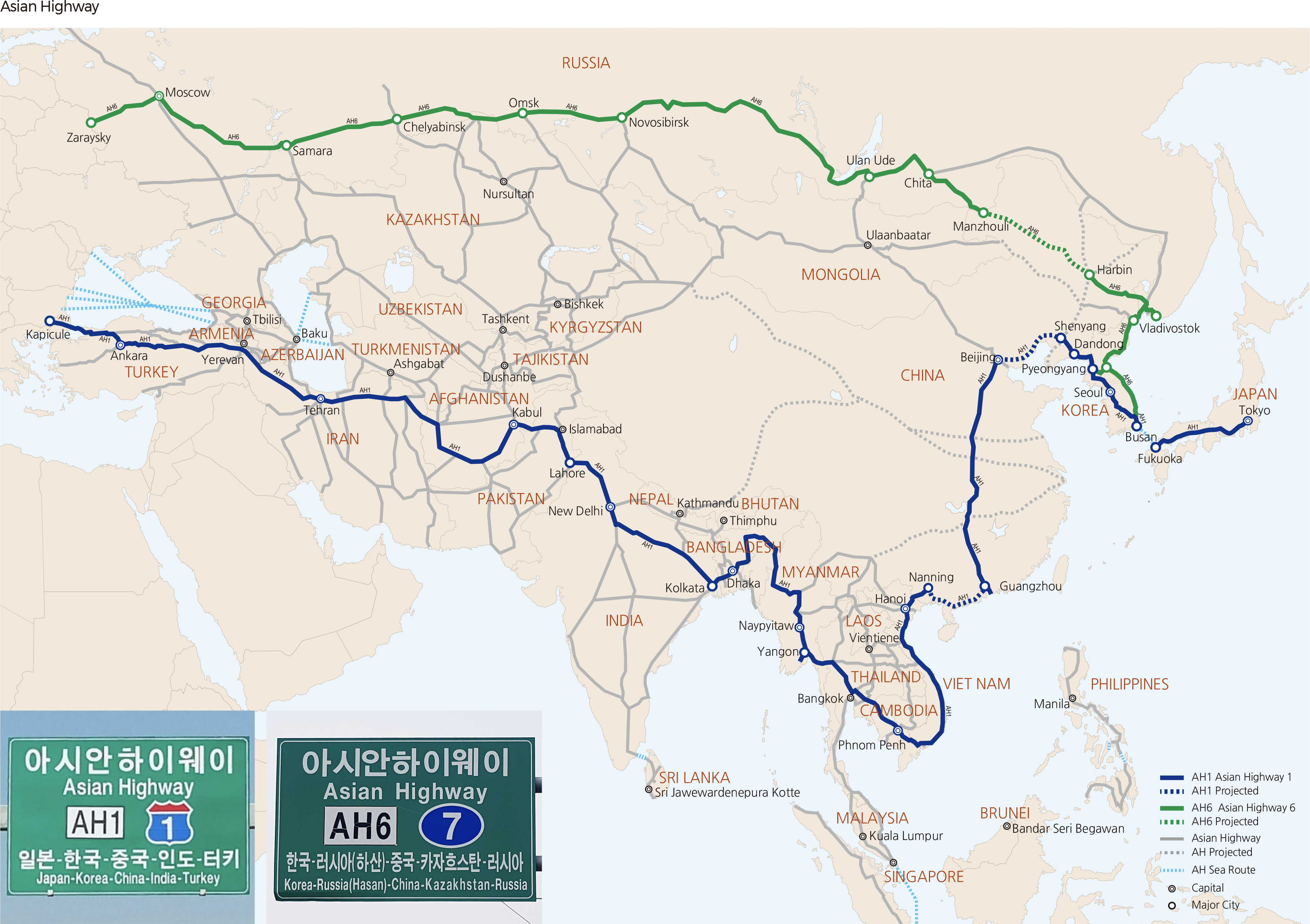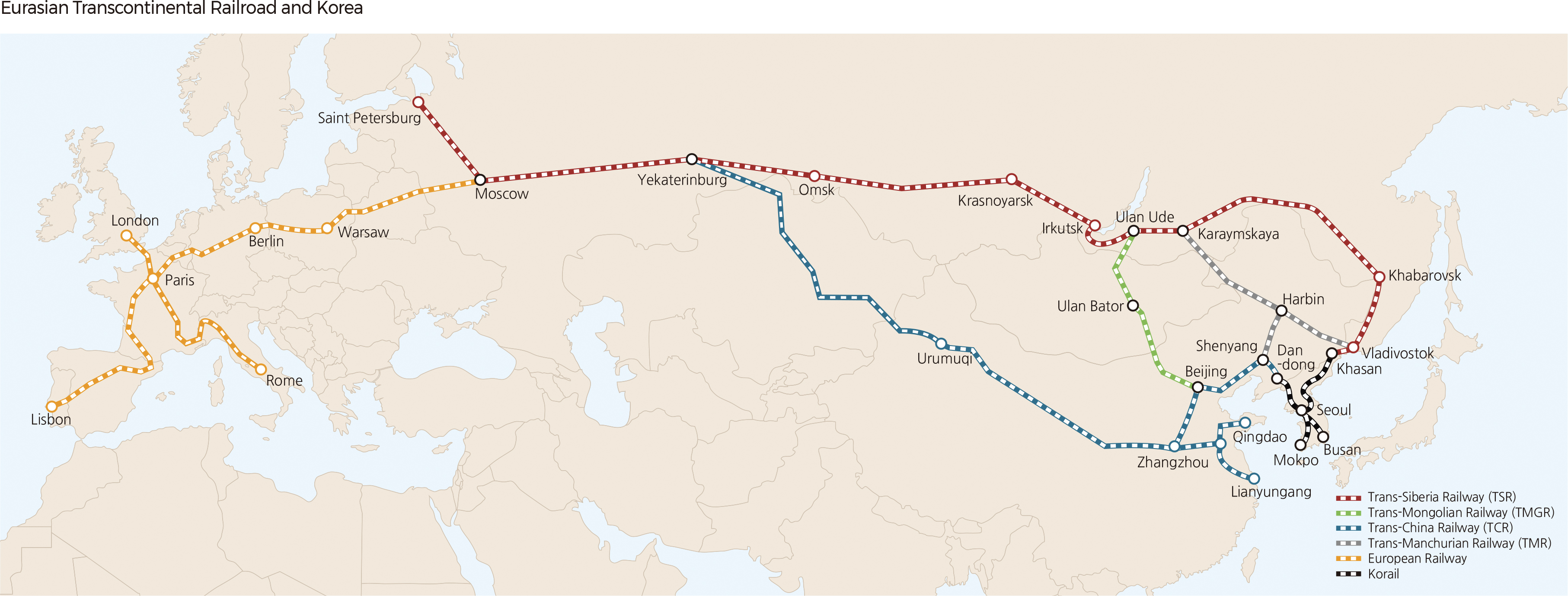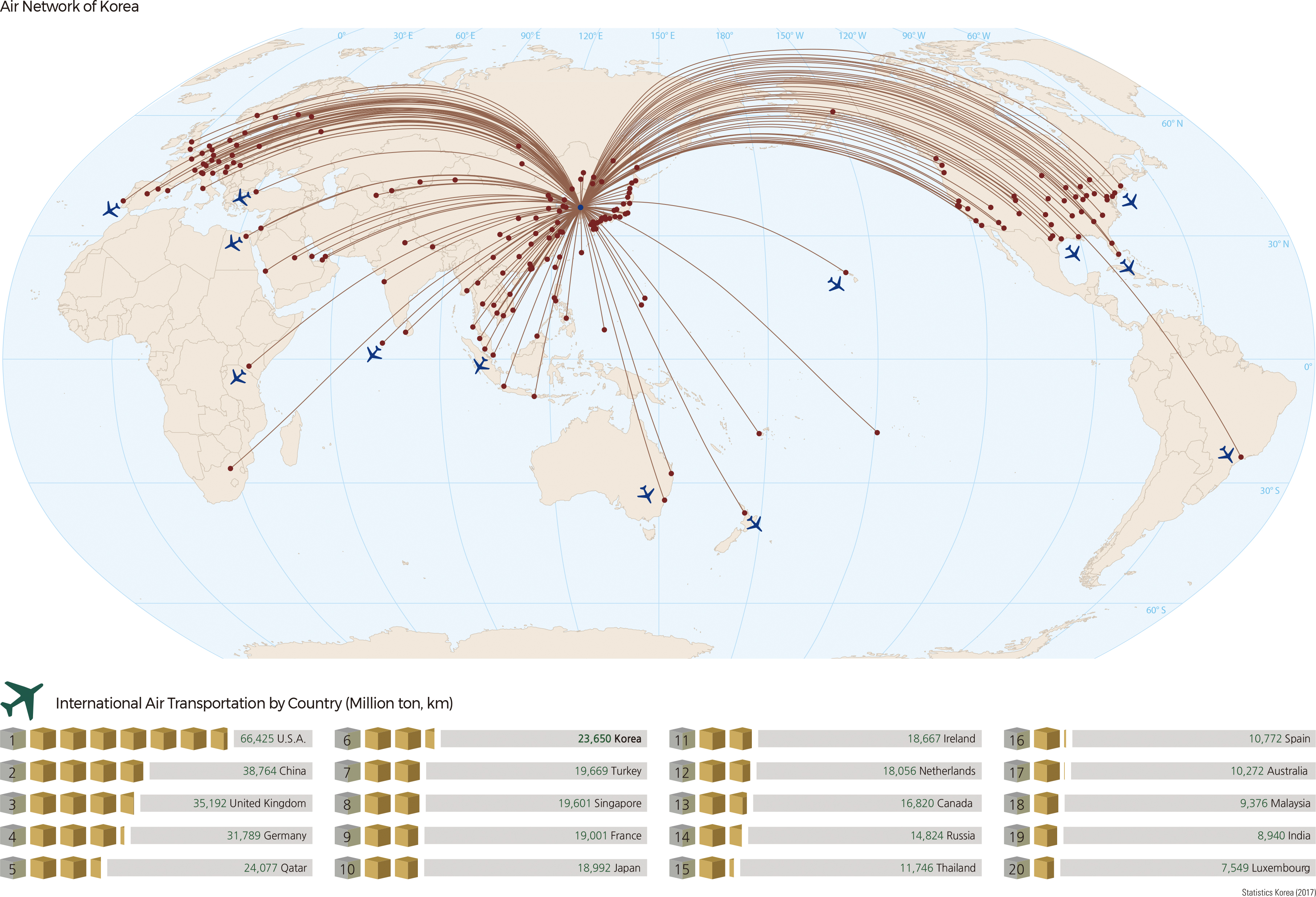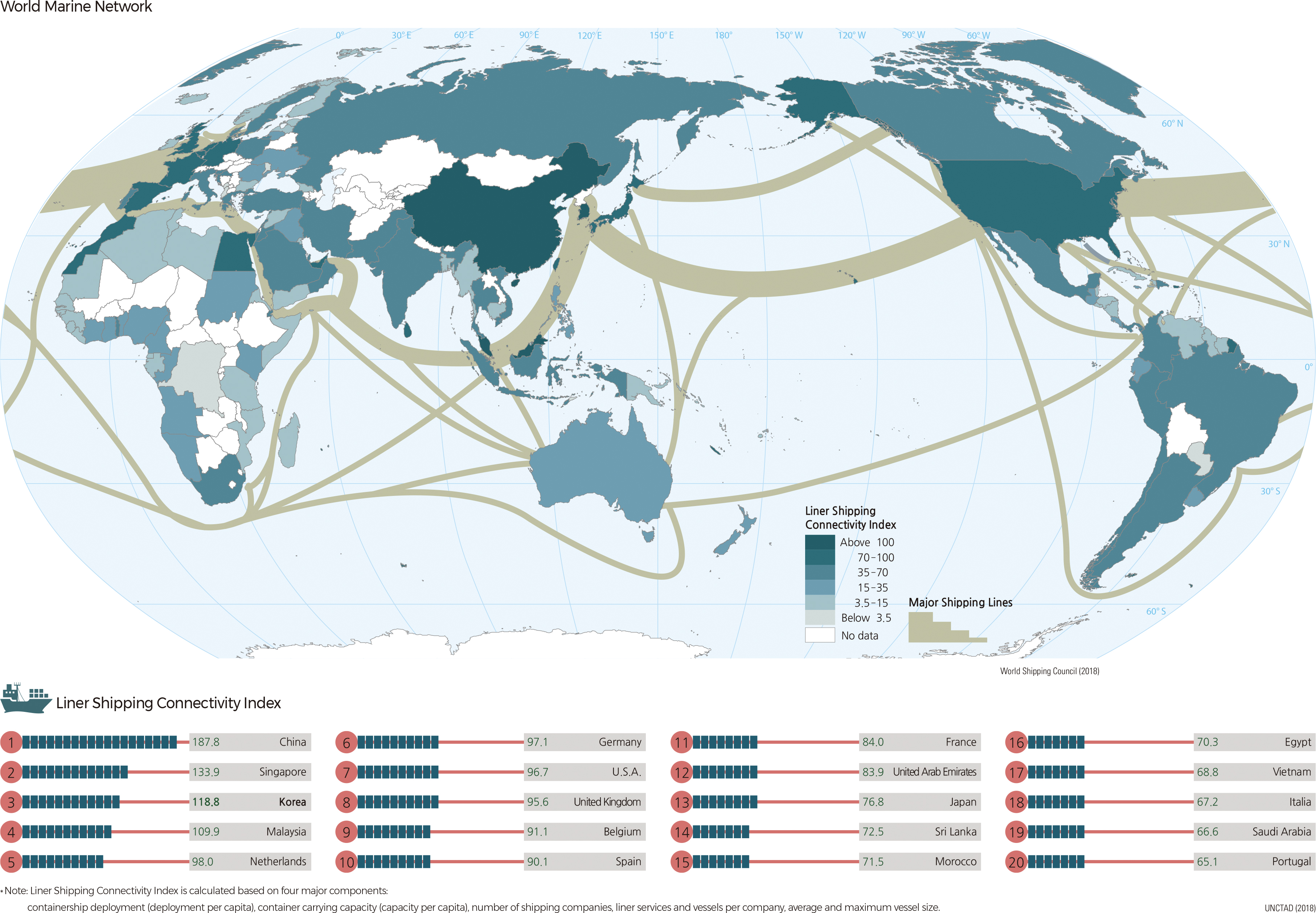English I 2019
Korean territory has great potential in terms of global accessibility. It is connected to major cities around the world via aviation and marine routes. The government has established plans to maximize the potential of the Korean territory by increasing its accessibility to regions in Eurasia through connecting railroads and roads. Specifically, when the Trans-Asian Railway (TAR) is connected to routes such as the Trans-Siberian Railway (TSR), the Trans-China Railway (TCR), the Trans-Manchurian Railway (TMR), the Trans-Mongolian Railway (TMGR), and the Trans-Korean Railway (TKR), Korea will serve as an advanced logistics and transportation base and a gateway to Eurasia. Recently, the Korea Railroad Corporation (KORAIL) made significant progress in the initiative to construct a transcontinental railroad by joining the Organization for Co-operation between Railways, which is comprised of 27 countries, including Russia, China, and North Korea.
Along with the advancement in railway transportation, Korea has strengthened cooperation with Asian countries to connect the road network under the Asian Highway (AH) Project led by the United Nations Economic and Social Commission for Asia and the Pacific (ESCAP). The AH Project was initiated in 2005, and an agreement has been signed by 32 countries in Asia to allow highways totaling approximately 140,000 km to cross the continent, utilizing 55 routes, including eight major ones. All routes for this plan begin with A, and the number designates where the road will pass through: A1–9 are international routes, A10–39 go to Southeast Asia, A40–69 go to South Asia, and A70–99 go to the Middle East. In Korea, two A routes will run across the country: A1 is proposed to run from Japan to Turkey via Busan-Seoul-Pyeongyang-Sinuiju-China-Vietnam-Thailand-India-Pakistan-Iran, and A6 will run from Busan to Georgia via Gangneung-Wonsan-Russia (Khasan)-China-Kazakhstan-Russia.
High connectivity has massively contributed to Korea becoming a powerhouse in both the aviation and marine industries. As of March 2019, Incheon International Airport has evolved into a hub airport for East Asia, with 83 airlines linking 175 cities with direct flights. This potential and the growth of trade have laid a foundation for Korea to become the world’s 5th biggest player in air transportation. Korea is also at the heart of the world’s major shipping networks, such as the Northeast Asia-Southeast Asia and the Northeast Asia-North America shipping routes. Korea ranks 3rd according to the Liner Shipping Connectivity Index (an indicator of how well countries are connected to the global shipping network), following only China and Singapore. |



